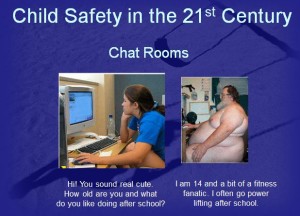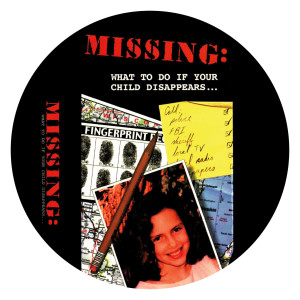
Introduction
The Internet has changed the rules. Back in the day, children had to beware of predators lurking in alleys, dark stairwells, in and around parks and schoolyards. Those concerns still exist, but the Internet has emboldened a new generation of cyber-perverts who rely upon anonymity and subterfuge to engage their evil intentions.
While the vast majority of people were marveling at the potential and benefits of the Internet, a small subset of individuals were pursuing the dark side of cyber space: networking with each other and empowering amoral behavior; re-invigorating the near dormant child pornography industry; and lurking behind false profiles as they attempted to lure, groom, and victimize our children. The very predators who could not penetrate our dead bolts, alarm systems, guard dogs or personal armories had found a back alley into our living rooms under the camouflage of binary code and new world technology.
The problem has become so alarming that an instant message stating that, “I am a twelve-year-old-boy home alone and I want to have sex with you,” is enough to launch and deliver a convoy of white and blue collar pedophiles willing to risk everything to satisfy uncontrollable urges. While we basked in a false sense of security the family living room became the predator’s new playground.
Strangers Are Not the Problem
Stranger danger is a misleading concept from a time when we did not understand child victimization. In fact, the vast majority of children are harmed by somebody they know: a teacher, clergy member, family friend or even a family member.
Do
- Always check with your parents before you go anywhere. – This is especially important if you don’t have a cell phone. Parents need to have access to their kids in case of emergencies, missed curfews, or other unforetold circumstances.
- Always be with at least one other person when you are outside. – There is strength in numbers. This is also called the buddy system. You look out for your buddy, and your buddy looks out for you.
- Trust your feelings. – This is called instinct. Sometimes, we all get a feeling that something is not as it should be.
- If something feels wrong, put distance between yourself and whatever is making you feel uneasy. – Acting on your instinct is ingrained in animals as well as humans. Instinct is a primal reaction to circumstance. It is not based upon experience.
- Strangers can help kids in danger. – The vast majority of so called strangers would gladly help a child in distress. Kids can always approach a woman or group of women. Even other kids will protect you if you are in need of protection. The same thing goes with men, but unfortunately, they tend to be the problem.
Don’t
- Accept invitations from or cultivate relationships with adults without checking with you parents first. – Stick with age appropriate relationships. Adults who forge special friendships with kids are suspect. We know that people with unhealthy designs on children will go to extremes to gain unsupervised access to children in their volunteerism or career choices.
- Open the door to anyone when you are home alone. – A young child isolated and alone is no match for a determined predator or anyone else who wishes harm.
- Tell anyone that you are home alone. – Keep all doors and windows locked. Only answer phone calls from family members and check-in with your parents on a regular basis.
- Play in isolated areas. – Avoid alleys, dark stairwells, and other places that isolate or may trap you.
The Internet Is Here to Stay
The Internet affords tremendous benefits and enables monumental abuses. If we are going to ensure that the World Wide Web does not become a virtual Wild Wild West we have to aggressively engage those who would abuse it. But, by linking arms and working toward a common goal, we can ensure that our kid’s online experience is empowering, positive and safe.
Do
- Have fun with the Internet – experiment, email, chat, surf, research, play games, and create social networking profiles so that you can communicate with your friends. Just be careful about doing so.
- Trust your parents – Talk to them about your Internet experience, follow their rules, and allow them to monitor your online activities.
- Inform your parents if you see violent or pornographic images – These may be illegal images, and are certainly not intended for the eyes of children.
- Stay on public, monitored, child friendly rooms if you are using instant messaging or entering chat rooms. – Predators have the advantage because they are anonymous on the Internet. Remember, not everybody is who they say they are.
Don’t
- Share personal information. – Your identity, your address, school, phone number, passwords, etc. should never be shared with people that you don’t know in real life. Predators and rogue marketers can use this information against you.
- Make your social networking profiles public. – By sharing social networking profiles only with your friends you are ensuring the integrity of your friends and the validity of their profiles.
- Don’t reply to or start a conversation with people you don’t know. – Don’t accept gifts from them or agree to meet with them.
- It is a terrible idea to open email attachments from people that you do not know. – They may contain viruses or malware.
- Plagiarize – It is cheating to copy other people’s ideas and pass them off as your own.
Summary
There is no silver bullet that will end crimes against children. Legislation alone will never fully protect children on the street, in their bedrooms or online. Law enforcement does not have the resources to simultaneously and constantly patrol every community, and online decoy stings will never totally eradicate the black heart of a predator. By itself street surveillance and Internet technology cannot contain evil intention. Education and awareness, in the classroom or at home, will only go so far toward protecting kids, because kids are vulnerable by nature of who they are.
It is our responsibility as adults to take the steps necessary to protect our kids. We can accomplish that goal by organizing our neighborhoods to protect our children and our property. Support legislators that understand the importance of punishing violent criminals and providing resources for at risk children. Volunteer with and donate to organizations that are dedicated to ensuring that children are provided with opportunities to thrive and prosper. Utilize technology solutions and Internet tools designed to assist you in protecting children from inherent danger. Be a good citizen and report suspicious individuals and circumstances to the police. Show your children areas to avoid like alleys and dark stairwells, and show them the best routes to and from school. Finally, remember that we cannot put the burden of child safety on the shoulders of the children.
 In 2012 California State Senator Leland Yee, who appeared before San Francisco Superior Court in shackles this morning, accomplished one of his long term legislative goals with the passage of Senate Bill 9. This law gives a second chance to most killers who were under the age of 18 at the time of their crime and sentenced to life without parole. They can ask the court for a new sentencing hearing. At that hearing, they will have the chance of getting a new sentence with the possibility of parole.
In 2012 California State Senator Leland Yee, who appeared before San Francisco Superior Court in shackles this morning, accomplished one of his long term legislative goals with the passage of Senate Bill 9. This law gives a second chance to most killers who were under the age of 18 at the time of their crime and sentenced to life without parole. They can ask the court for a new sentencing hearing. At that hearing, they will have the chance of getting a new sentence with the possibility of parole.






